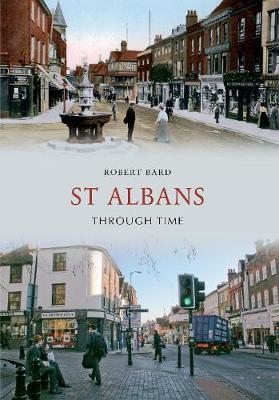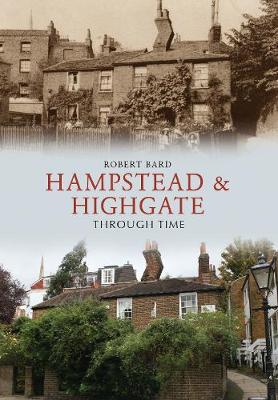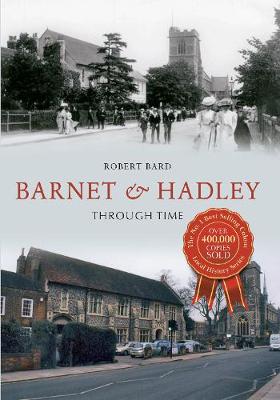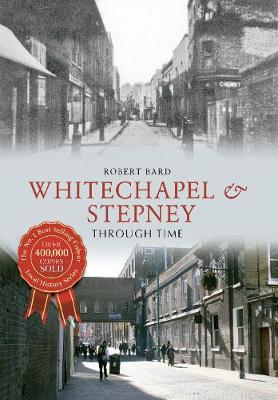Through Time
5 total works
As one of the earliest recorded towns in Britain, St Albans has had a long, colourful and distinguished history. Dominated by the great Abbey Church of St Alban, the adjacent site was a thriving market town in Saxon, Norman, medieval and Georgian times. The coming of the railway in the mid nineteenth century saw increased development to the east of the original settlement, and this has been steadily growing ever since. St Albans was one of the sites where Magna Carta was drafted. It played a great part in the Peasants' Revolt, and took Parliament's side in the Civil War. Each of these periods has left its mark on the architecture and environment. Today St Albans is still a thriving market town, a focus for commuters and a magnet for tourists. All this and more is captured in this remarkable book, celebrating the vibrant life of this most historic area.
Although early records of Hampstead can be found in a grant by King Ethelred the Unready to the monastery of St Peter’s at Westminster (AD 986) and it is referred to in the Domesday Book (1086), the history of Hampstead is generally traced back to the seventeenth century. Much luxurious housing was created during the 1870s and 1880s in the area that is now the political ward of Frognal & Fitzjohns. A lot of this housing remains to this day.
Historically, Highgate adjoined the Bishop of London’s hunting estate. The bishop kept a toll house where one of the main northward roads out of London entered his land. In later centuries, Highgate was associated with the highwayman Dick Turpin. Highgate Hill, the steep street linking Archway and Highgate Village, was the route of the first cable car to be built in Europe. It operated between 1884 and 1909. Today, Hampstead and Highgate retain their village feel.
Historically, Highgate adjoined the Bishop of London’s hunting estate. The bishop kept a toll house where one of the main northward roads out of London entered his land. In later centuries, Highgate was associated with the highwayman Dick Turpin. Highgate Hill, the steep street linking Archway and Highgate Village, was the route of the first cable car to be built in Europe. It operated between 1884 and 1909. Today, Hampstead and Highgate retain their village feel.
Situated in North London near the county boundary with Hertfordshire, Barnet has a long and distinguished history. Properly called Chipping Barnet or High Barnet, the area has become synonymous with its historic horse fair, founded in 1588 and now immortalised in cockney rhyming slang. The Battle of Barnet of 1471 is also rumoured to have served as the inspiration for the nursery rhyme, 'The Grand Old Duke of York'. A further glimpse of the past is provided by Barnet's sixteenth-century church. The neighbouring suburb of Hadley is no less historic and, like Barnet, has many points of interest. The childhood home of Princess Diana, Hadley is home to the 400-acre Trent Country Park, the former hunting ground of Henry VIII and Elizabeth I. Robert Bard invites you to join him on a journey through time, showcasing the changes and developments that have made Barnet & Hadley the bustling communities that they are today.
Elstree, situated 15 miles north of central London has its origins in Roman times. Through most of antiquity Elstree was sparsely occupied, and the location of a number of country seats. In the nineteenth century Elstree was the centre of attention for a famous murder. Charles Dickens was a frequent visitor, and Sir Richard Burton, explorer was born in Allum Lane. It remained rural until after the Second World War, and much of historic interest has survived development.Borehamwood with a history dating back to the Domesday Book was a hamlet of Elstree. With the arrival of the railway and its proximity to London, by 1914 it had attracted the film industry. It is now a major media centre hosting the BBC Television Centre where EastEnders and Holby City are made. This new books shows the development of two rural communities that after the Second World War became important centres in their own right.
Whitechapel, situated in London's famous East End, was so-named after a chapel dedicated to St Mary that was destroyed during the Second World War. While sixteenth-century Whitechapel was home to numerous foundries, breweries and tanneries by the mid-eighteenth century poverty and overpopulation had struck. Perhaps best-known for the horrific 'Whitechapel Murders' between 1888 and 1891, the Whitechapel of today is a cultural melting pot. Much like Whitechapel and the rest of the East End, Stepney was largely marshland until the nineteenth century and the expansion of London's docks and railways. Today, only a few vestiges of the district's Georgian and Victorian architecture survive, having given way to brick flat towers and terraced homes.




